When I ask friends overseas about Vietnamese food, the top three are always Phở, Bánh Mì, and Coffee.
Fair enough—but today, I want to show you how to make Cà Phê Sữa Đá—Vietnamese iced coffee, the bold and sweet heartbeat of Saigon!
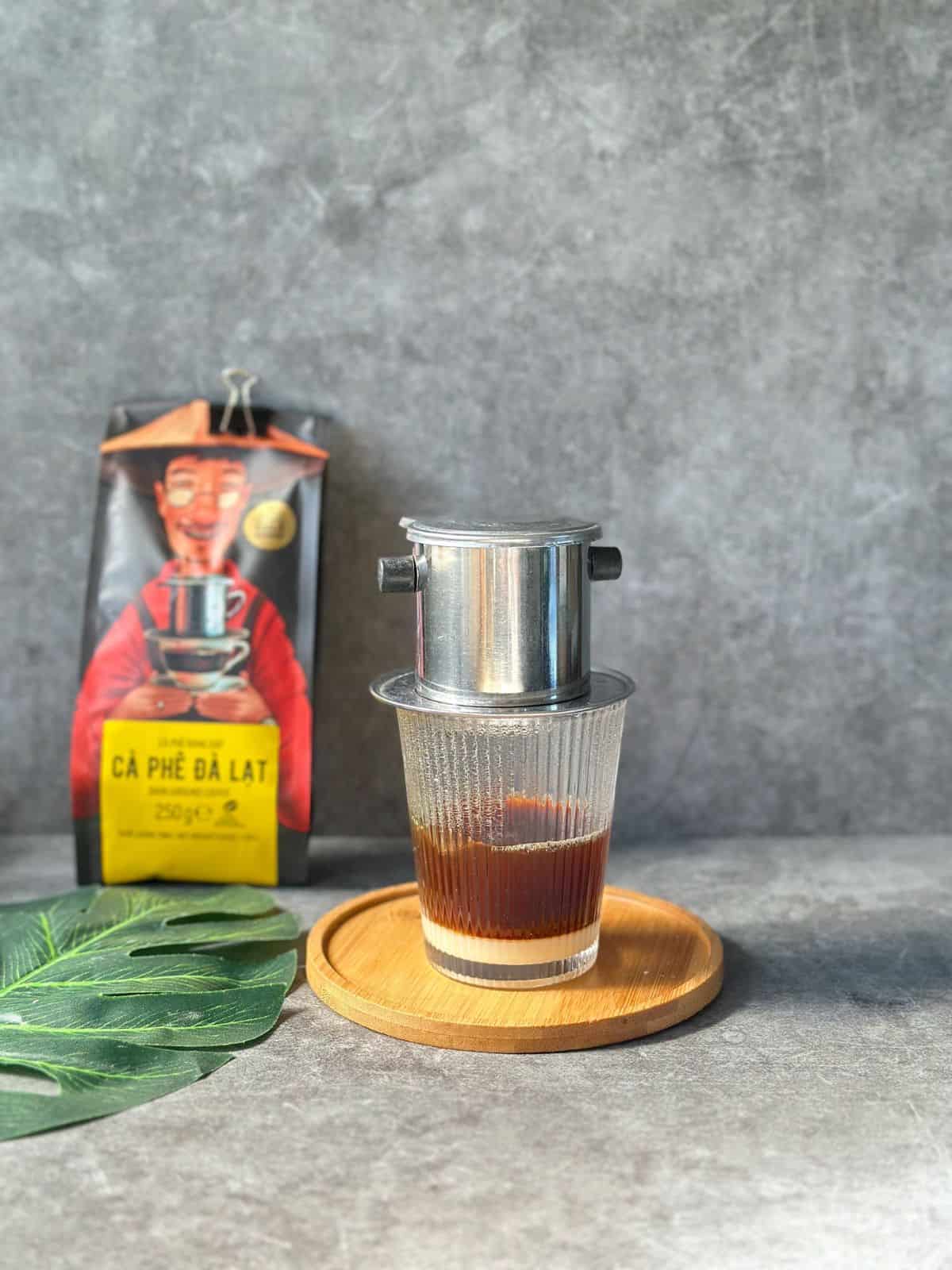
Vietnamese Iced Coffee (Cà Phê Sữa Đá)
If you’ve ever been to Vietnam, chances are you’ve seen people sipping on tall glasses filled with dark coffee, sweetened milk, and clinking ice cubes.
That’s Cà Phê Sữa Đá—Vietnamese iced coffee. It’s more than just a caffeine boost; it’s a daily ritual, a social habit, and honestly, one of the country’s most iconic drinks.
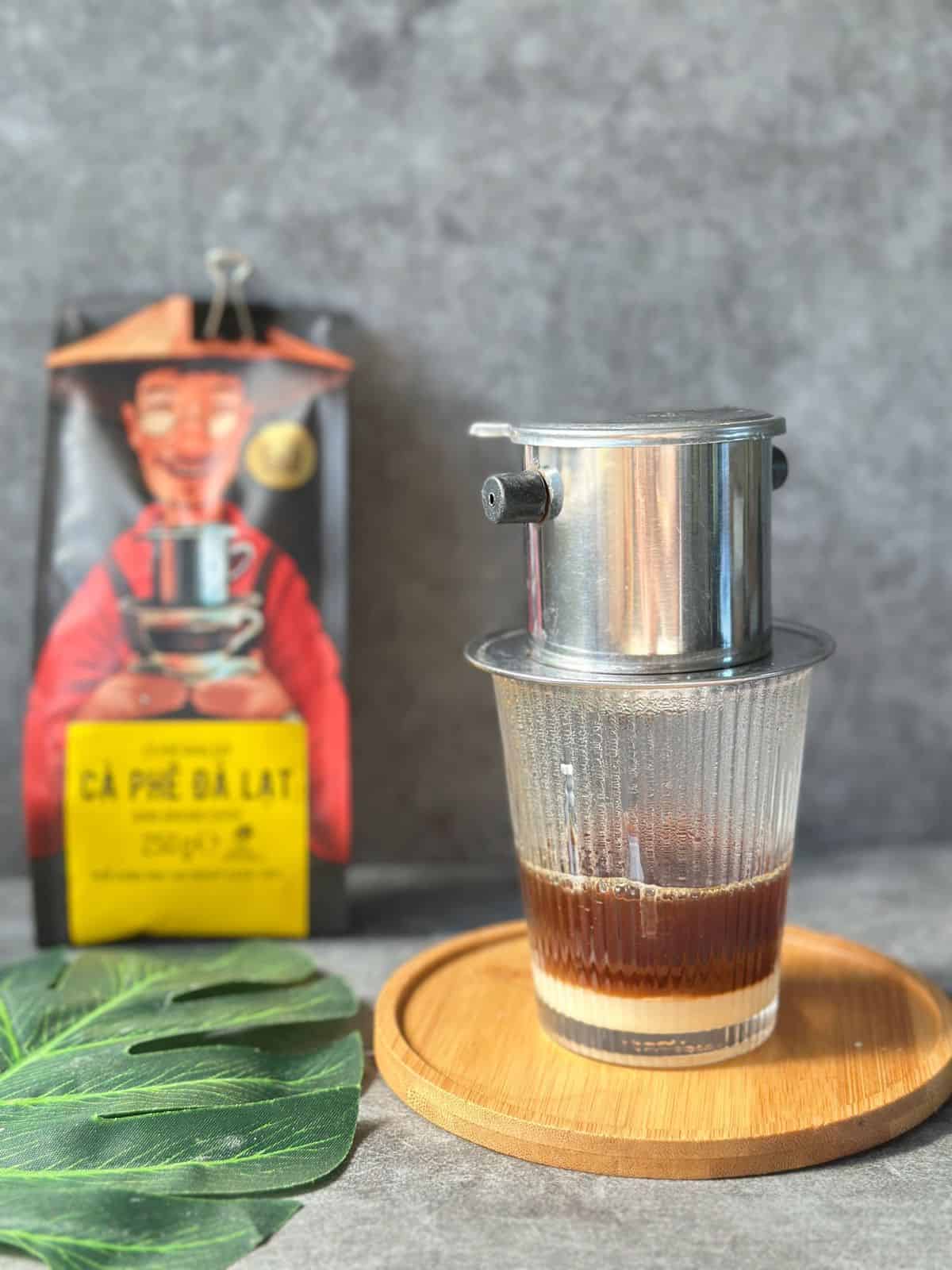
Unlike the quick grab-and-go coffee culture in the West, Vietnamese coffee is slow-brewed using a phin filter—a small metal drip filter placed directly over the cup.
The hot water gently drips through the strong, dark roast coffee (usually robusta beans), creating a bold, rich brew. Once brewed, it’s stirred together with sweetened condensed milk, poured over ice, and enjoyed sip by sip.
Coffee came to Vietnam with the French in the 19th century, but locals made it their own. Because fresh milk was scarce, condensed milk became the go-to, giving cà phê sữa đá its signature flavor.

Today, you’ll find it everywhere—from tiny plastic stools on Saigon sidewalks to modern specialty cafés.
To the Vietnamese, coffee is more than a caffeine fix—it’s about slowing down, chatting with friends, or just people-watching on a bustling street corner. For visitors, one sip is often enough to fall in love.
Coffee, Pho, and Banh Mi have become Vietnam’s culinary ambassadors to the world — though we still have countless underrated gems like Bun Bo Hue, Mi Quang, and Bun Cha waiting to be discovered.
Beyond Ca Phe Sua Da
Vietnamese coffee has come a long way from the classic iced version. Today, you can find all sorts of creative drinks, like:
Egg Coffee – creamy& dreamy egg cream with bold coffee
Salt Coffee – coffee with sweet-savory salted cream
Avocado Coffee – rich Vietnamese avocado smoothie blended with coffee
Coconut Coffee – a vegan version with Vietnamese coffee and coconut milk
Bac Xiu – Saigon’s sweet, milky white coffee
Check out my Vietnamese Coffee 101 post for the full scoop on everything you need to know about Vietnamese coffee.
Ingredients
- Vietnamese ground coffee – Usually a robusta-heavy blend, giving that bold, nutty flavor with hints of dark chocolate.
- Condensed milk – This is what makes Vietnamese coffee creamy and sweet enough to balance the strong robusta. Don’t swap it with fresh or evaporated milk if you want the authentic taste—it just won’t be the same.
What is a Phin filter?
A Phin filter is a tiny but essential tool for making authentic Vietnamese coffee.
It has a chamber that sits on a perforated plate, a small tamper to press the coffee grounds, and a lid that locks in the heat as your coffee slowly drips. Simple, portable, and yet it makes all the difference.

Instructions
Step 1: Prep & Bloom.
- Heat filtered water to around 194–203°F (90–95°C).
- Pour some hot water through the Phin to warm it up. This also helps the coffee bloom and extract better.
- Put a heaping tablespoon of ground Vietnamese coffee into the Phin chamber. Gently shake to level it out. Place the tamper on top without pressing.
- Add a small amount of hot water just enough to moisten the grounds. Let it bloom for a few seconds.
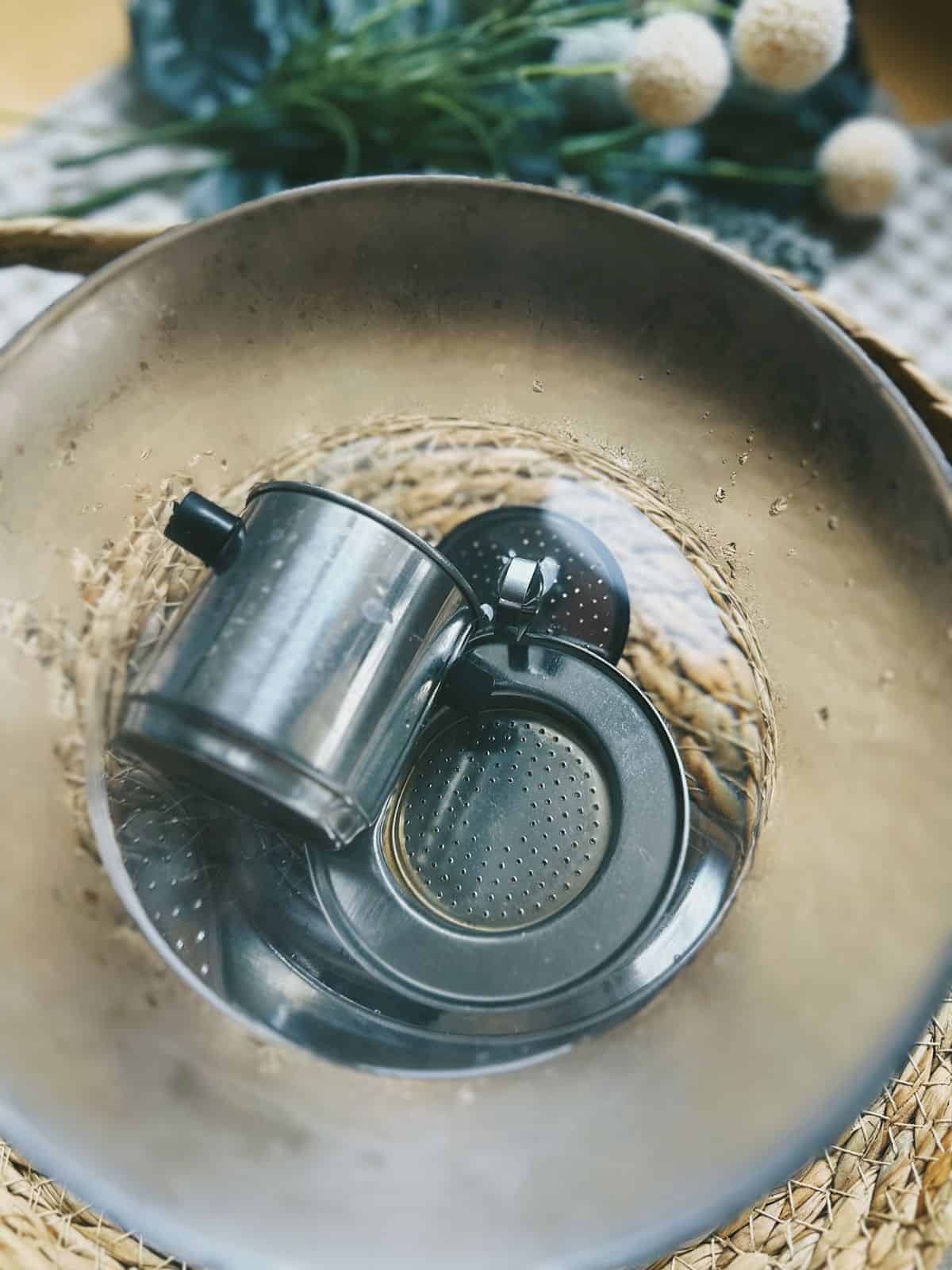
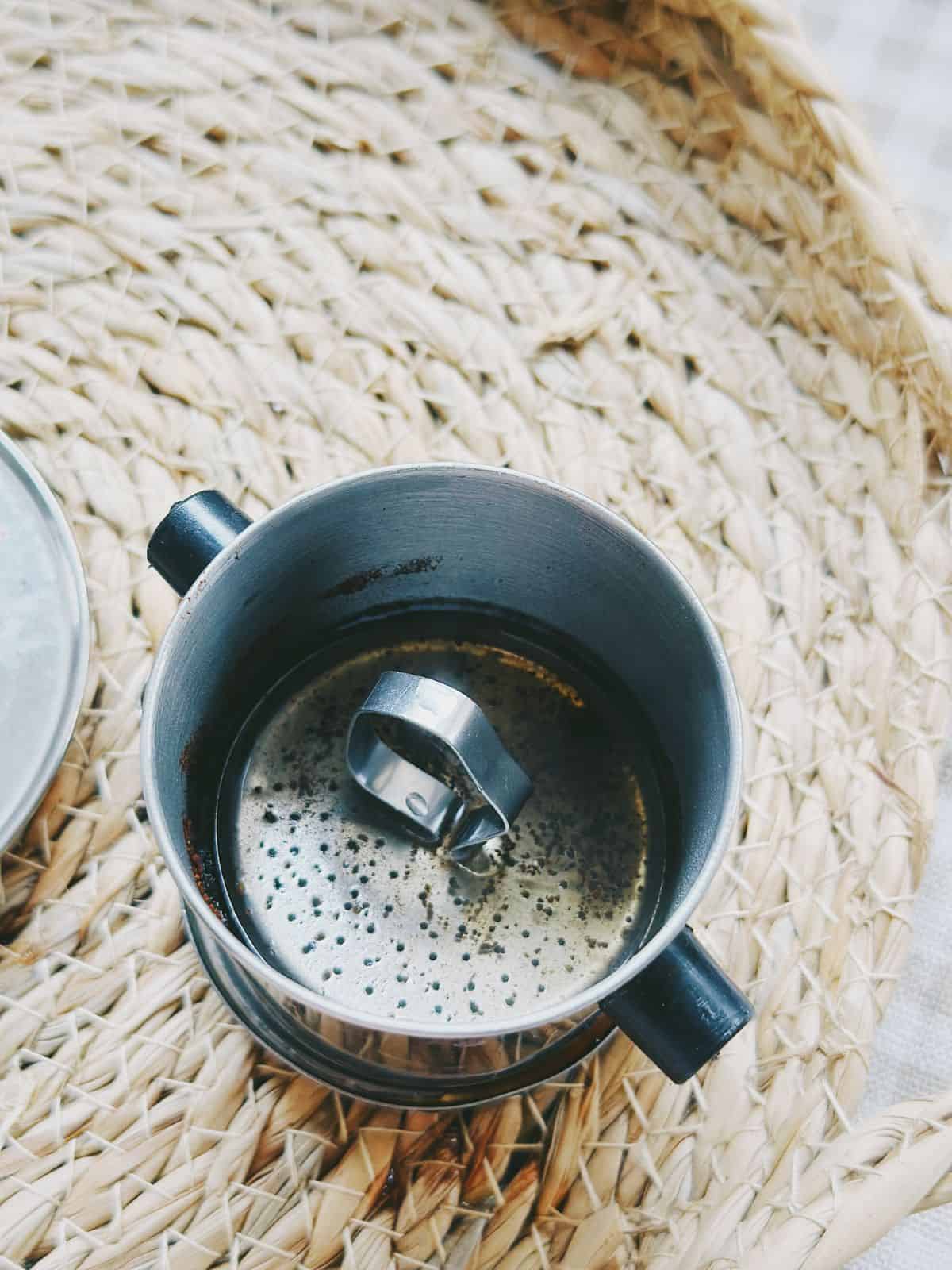
Step 2: Brew.
- Place the chamber on the perforated plate, then put it over your coffee glass. Carefully place the lid on top.
- Fill the chamber with hot water and let the coffee slowly drip. Brewing usually takes 4–5 minutes. If the filter clogs, gently stir with a spoon underneath.
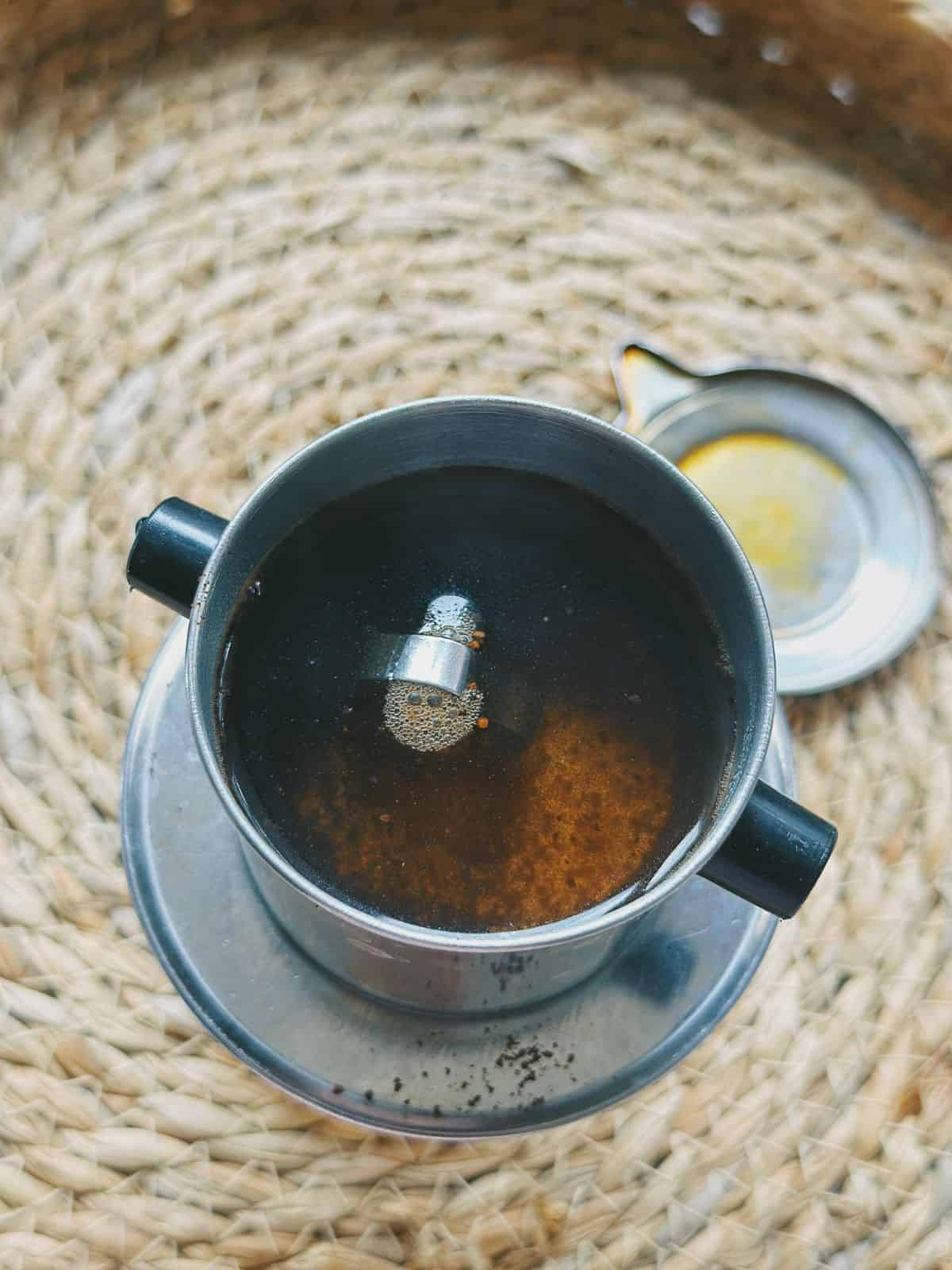

Step 3: Sweeten & Serve.
- Pour in condensed milk to your taste and stir well to combine.
- For Cà Phê Sữa Đá, add ice cubes or crushed ice. Enjoy your authentic Vietnamese coffee!
Local Tips for the Perfect Vietnamese Coffee
Grind matters – Use medium to medium-coarse coffee grounds. The Phin drips slowly, so if the coffee is too fine, it can end up overly strong and bitter.
Pick the right Phin – Anodized aluminum or stainless steel works best. Metal filters absorb and transfer heat better than ceramic ones.
Rinse first – Always rinse your Phin with hot water before brewing to warm it up and prep the coffee.
Water temperature – Aim for 194–203°F (90–95°C) for the best extraction.
Caramelized condensed milk – Some locals simmer the whole can of condensed milk for a few hours. It caramelizes slightly, adding a unique, rich flavor.
Storage – If you make coffee in advance, store it in an airtight container in the fridge for up to 2 days.
Coffee Brands – Coffee makes a perfect Vietnamese souvenir.
Check out my post on the best Vietnamese coffee brands for some great gift ideas and recommendations.
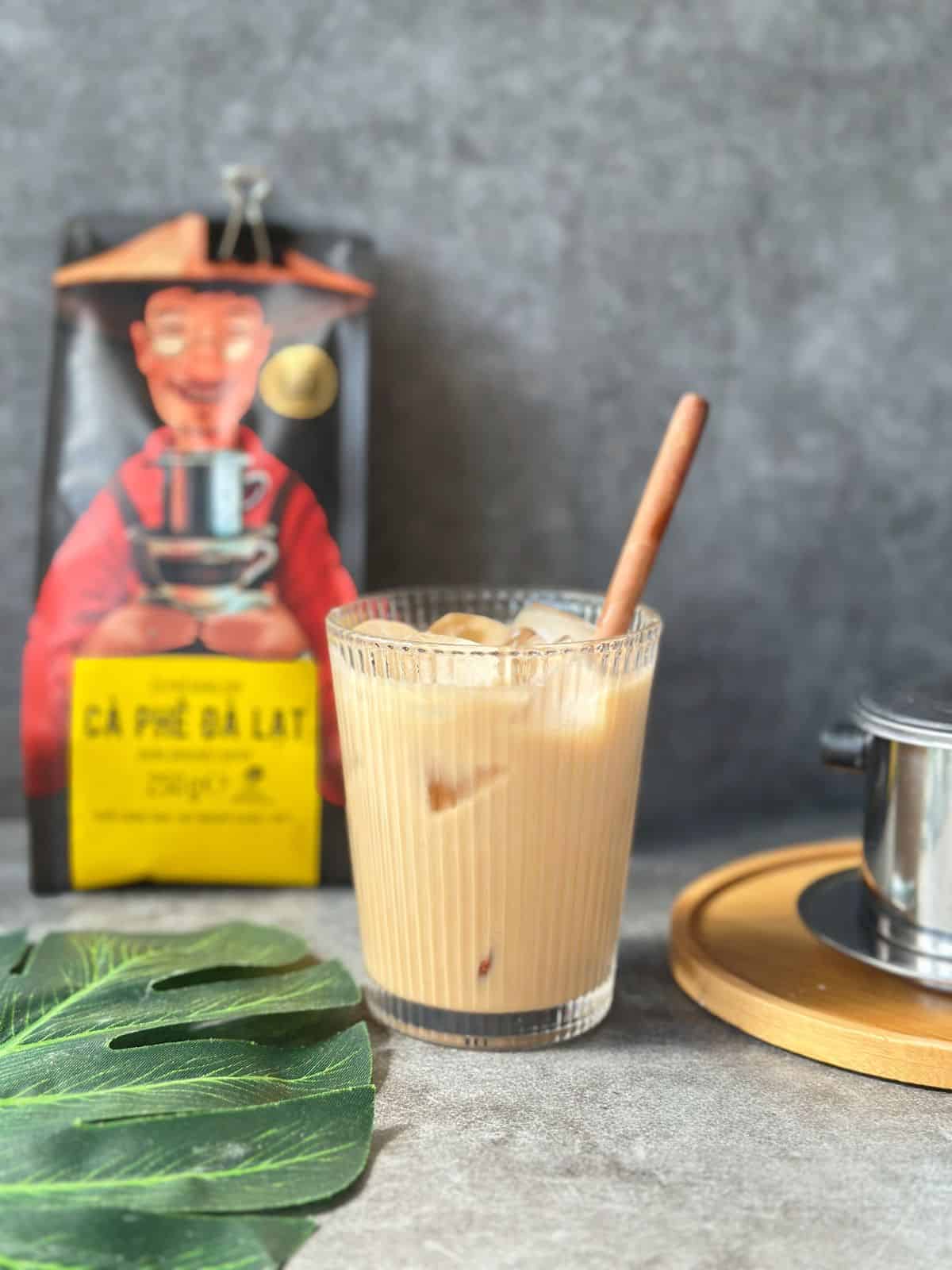
How to Pair Vietnamese Coffee
For Breakfast – It pairs beautifully with a steaming bowl of Pho, a quick grab of Xoi Man (savory sticky rice), or a flavorful plate of Com Tam (broken rice with lemongrass pork chops).
With Snacks – Vietnamese coffee pairs perfectly with savory bites like Banh Hot Dog, Banh Pate So or Banh Bao. A little coffee break never hurt anyone!
With Flan – For something indulgent, drizzle your Vietnamese coffee over Banh Flan (Vietnamese caramel flan). It’s creamy, sweet, and utterly irresistible.
Other Vietnamese Drinks to Try – For a change, check out Sua Bap (corn milk), Sua Dau Nanh (soy milk), or Tra Sua (milk tea). Refreshing and delicious!
Bring authentic Vietnamese Street Food to your kitchen
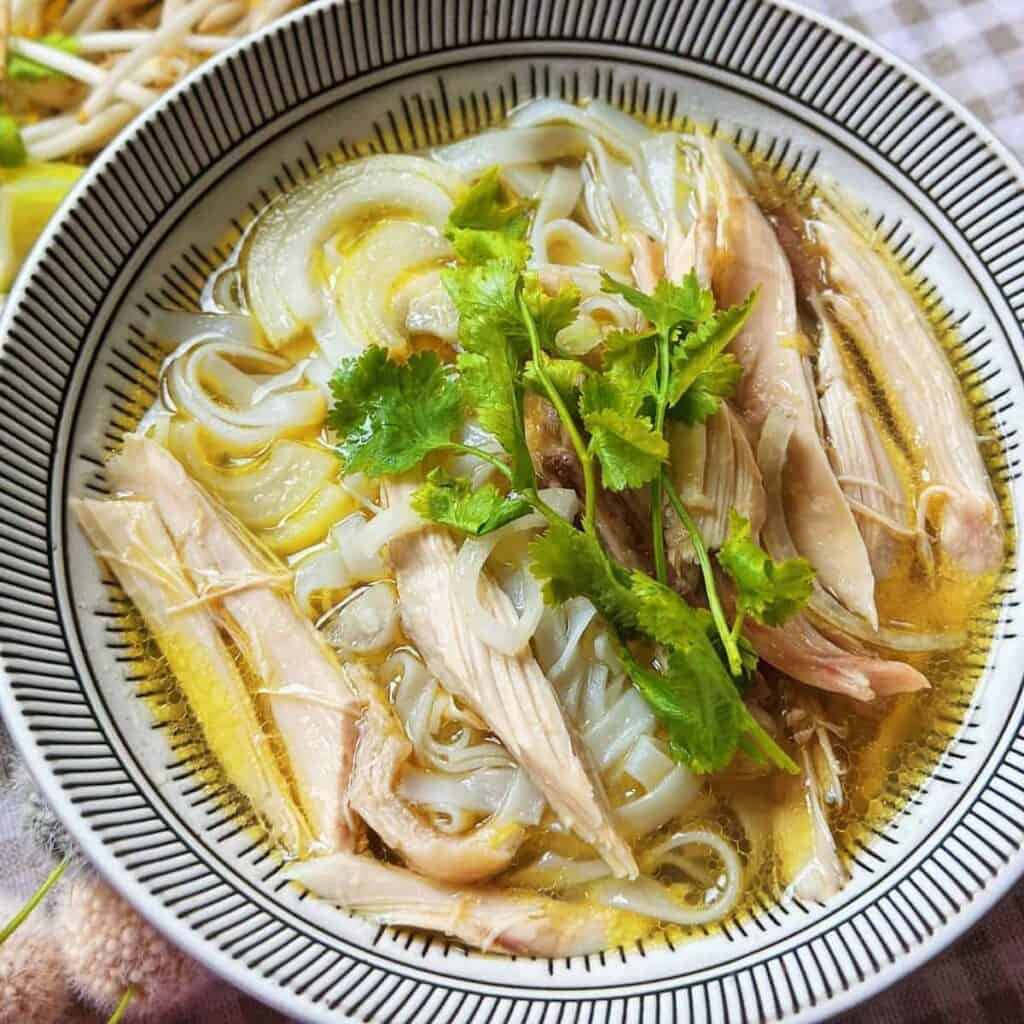
(Hanoi-style)
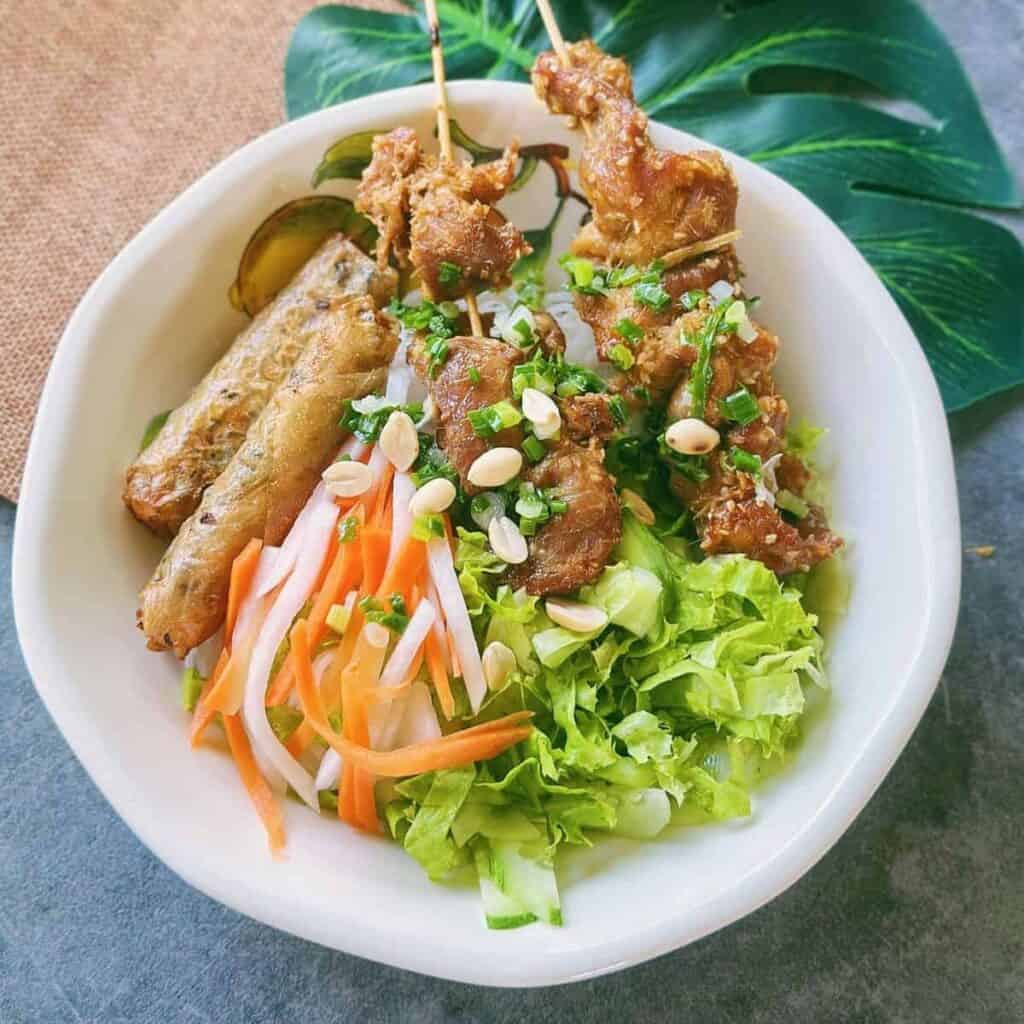
(Rice noodle salad with gilled pork)

(Pork meatball rice noodle soup)
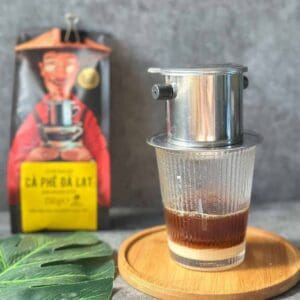
Vietnamese Coffee (Iced Option: Cà Phê Sữa Đá)
Equipment
- 1 Phin Coffee Filter
Ingredients
- 1 tbsp Vietnamese ground coffee (heaped)
- Filtered Water
- Condensed milk (to your taste)
Instructions
- Heat your filtered water until it reaches a gentle boil (194–203°F / 90–95°C).
- Rinse the Phin filter with boiling water. It will help the coffee bloom and extract better.
- Add a heaped tablespoon of ground coffee to the phin chamber. Gently shake it to distribute the coffee evenly. Place the tamper on the coffee (DO NOT press it).
- Drizzle some hot water onto the phin lid. Then, place the chamber on top of the lid.
- Afterward, add a bit of water to the ground coffee—just enough to moisten them and allow the grind to bloom a bit.
- Move the chamber onto the phin plate and then place it over your coffee glass. Be careful, as the phin is now hot.
- Fill the filter and let it drip. Place the lid on top. The recommended brewing time is around 4-5 minutes. If your phin gets clogged, use a spoon to unclog beneath the filter.
- Pour condensed milk to your liking, stir to combine, and you've got Cà Phê Sữa.
- Add ice cubes or crushed ice, and your Cà Phê Sữa Đá (Vietnamese iced coffee) is ready.

